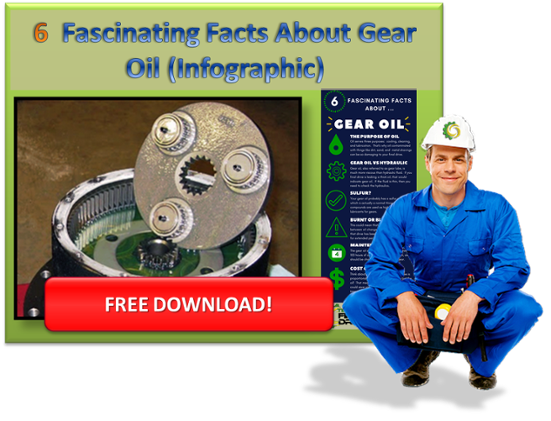How familiar are you with common lubricant additives, especially when it comes to gear oil?
.png?width=600&name=Common%20Gear%20Oil%20Additives%20(1).png)
Here are a few other blog posts you might be interested in:
- Final Drive Lubrication and Contamination
- Final Drive Maintenance: Gear Oil
- How to Troubleshoot an Overheating Gearbox
Basic Categories of Oil Additives
One way of looking at additives is to focus on their purpose. According to Machinery Lubrication magazine, there are three purposes that oil additives are intended to serve:
- Enhancing the properties of the existing base oil
- Suppressing the undesirable properties of the base oil
- Imparting new properties to base oils
Based on these purposes, oil additives can be divided into three categories:
- Enhancing (corrosion inhibitors, anti-foam agents, antioxidants, and demulsifying agents)
- Suppressing (viscosity index improvers, pour-point depressants)
- Imparting (metal deactivators, tackiness agents, extreme pressure)
Most Common Types of Additives
Here's a list of the most common additives found in oil:
- Wear prevention
- Extreme pressure (EP)
- Pour-point depressant
- Viscosity index (VI) improver
- Tackifiers
- Detergent dispersant
- Defoaming agent
- Oxidation inhibitor
- Corrosion and rust inhibitors
Common Oil Additives Explained
Wear prevention additives are used to reduce friction and the effects of wear so that scoring and seizure are less likely to occur. For applications where pressures are expected to be high (such as gearboxes), extreme pressure additives are used instead of wear prevention to achieve the same goal.
A pour-point depressant is used to allow oil to be used at a lower temperature. Velocity index improvers allow oil to remain consistently viscous over a wider ranger of temperatures. Tackifiers are used to prevent the oil from "flinging" off the surface of key components while they rotate.
Detergents are used in oil to neutralize corrosive acids that may form and to keep surfaces free of problematic deposits. Detergent dispersants are mainly used in engine oils that contain detergents. Their job is to aid in trapping soot so that it is finely dispersed or suspended in the oil. Defoaming agents assist in eliminating the foam bubbles that try to develop in oil.
Oxidation inhibitors are used to prevent reactions between oxygen and oil, which means they prolong the useful life of oil by slowing down the aging process. Corrosion and rust inhibitors, as their names imply, prevent the development of corrosion and rust on the surfaces with which the oil comes into contact.
Gear Oil Additives
Gears such as those found in the planetary side of a final drive motor involve extremely high forces and pressures that can overcome the natural viscosity of standard oils. This means that the film thickness won't always be thick enough to protect surfaces coming into contact with each other, which leads to adhesive wear. In addition, gears and shafts may be rotating at high speeds where it is possible that the oil may simply be flung away from critical surfaces. Typical additives for gear oil may include EP, VI improvers, rust and oxidation inhibitors, defoaming agents, and tackifiers.
Conclusion
Gear oil is a major factor in how well your final drive motor runs. Here at Texas Final Drive, we always encourage final drive owners to check gear oil levels and change out the gear oil on a regular basis as part of their regular maintenance routines. In fact, neglecting the gear oil can wipe out a final drive far faster than you might suspect.


